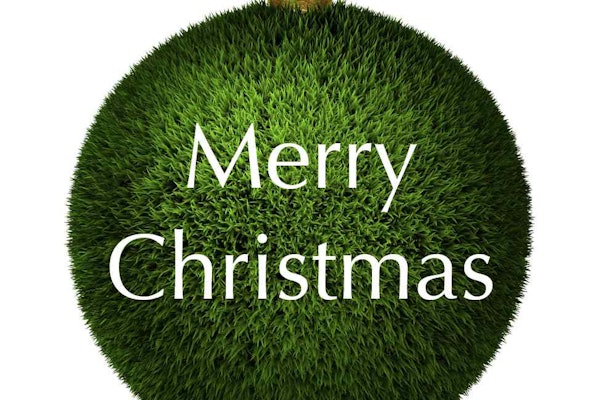There are several ways to combat erosion, but perhaps one of the most effective and less expensive options is hydroseeding. While landscapers may employ broadcast seeding or the laying of sod as their primary grass applications, low cost hydroseeding and premium hydromulching offer beneficial results for erosion control on banks and hills and provide thick, lush lawns.
Basic hydroseeding involves mixing low cost mulch, grass seed, tackifier and fertilizer in a hydroseeder and then spraying the green-colored mix onto bare soil. “Hydromulching” (a term the green industry is beginning to adopt) calls for better mulch products, such as 100 percent wood fiber or 100 percent paper-based mulch, and tackifier to bind the materials. The differences between the two applications can be seen in the cost and the results: Low cost hydroseeding can be less than 1 cent per square foot, says Jim Lincoln, president of TurfMaker, whereas hydromulching can be 4 cents or more per square foot.
“Regular hydroseeding is one-third the cost of laying sod,” says Bill Lockwood, president of the International Association of Hydroseeding Professionals and owner of Planet Landscaping in Oxford, Connecticut.
Typically, fall is the best time for hydroseeding, according to Larry Barch, vice president of sales for Bowie Industries. “The temperatures are cooler and there is not as much rain as there is during the spring. Cooler nights provide ideal conditions for the seed to germinate.”
Several different types of mulch are available for hydroseeding applications, including straw, wood or paper-based products. According to Lockwood, the industry seems to prefer wood or paper mulch as opposed to the newer options on the market. Wood fiber mulch also retains more moisture, thus protecting soil from eroding.
Jet-agitated vs. mechanically agitated machines
There are two types of machines available for hydroseeding or hydromulching. Jet-agitated machines are the less expensive of the two, using a re-circulation approach for the mixing process. “Jets of water mix up the material, keeping it in suspension,” says Russ Collier, vice president of Hydrograss.
According to Lincoln, these machines can hold up to 33 pounds of paper mulch per 100 gallons of tank capacity. “Loading more mulch, or better quality mulch in the tank will likely lead to clogging,” he cautions. “Poor applications result when there are not enough materials for the process,” he adds. “As a general rule, more mulch and tackifier are better. However, too much paper mulch can be detrimental, as it inhibits germination.”
Mechanically agitated machines use a mechanical paddle to mix the materials and are more expensive than jet agitated because they have more components. “Also, mechanical machines are capable of running pure wood fiber mulch for thicker slurries,” Collier says. “With jet machines, thicker material is harder to break up. As the slurry thickens, the power of the jet is diffused.”
Getting a return on your investment
According to Lincoln, experienced landscapers who are familiar with hydroseeding will be more likely to purchase their first machines for large jobs. “Having prior knowledge of the process, materials, application rates and application times required will give you an excellent feel for your costs,” he says. “If you’ve performed hydroseeding as a subcontractor, you’ll know how to charge your customers an amount which is satisfactory to them while yielding a handsome profit for yourself.” Ideally, Lincoln says, it is not uncommon for one or two large hydroseeding jobs to pay for the cost of the machine.
No matter which style machine you opt for, prior to purchasing, note each machine’s specifications to ensure quality work and efficient operation.
“Many first-time buyers choose 500- to 800-gallon units,” he says. “This size machine sprays thin mulch on areas as large as 20,000 to 25,000 square feet. However for home lawn applications, using good mulch products applied at adequate rates is necessary.”
Under these circumstances, Lincoln claims 100 gallons of material will likely not be applied to more than 1,000 square feet, and where heavy applications are needed 100 gallons can be applied to as little as 500 square feet.
“Not knowing the difference between low cost hydroseeding and premium mulch applications, as well as not knowing what to charge for work on the different levels, is a major mistake made by inexperienced machine owners,” Lincoln says.







